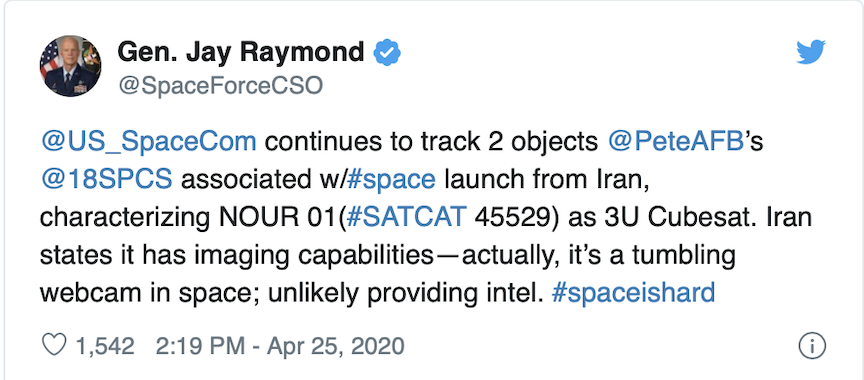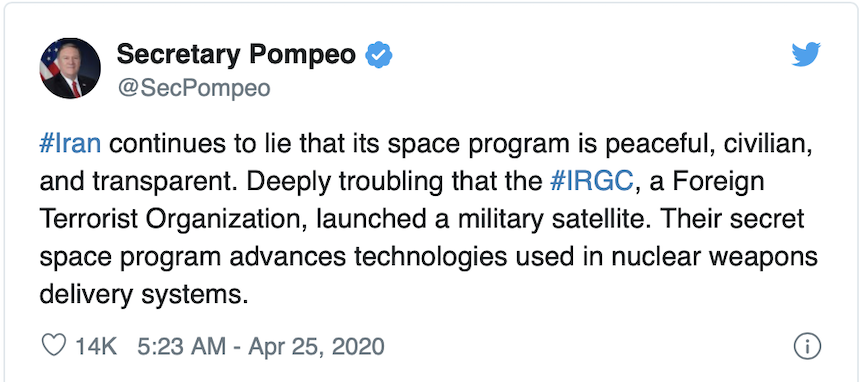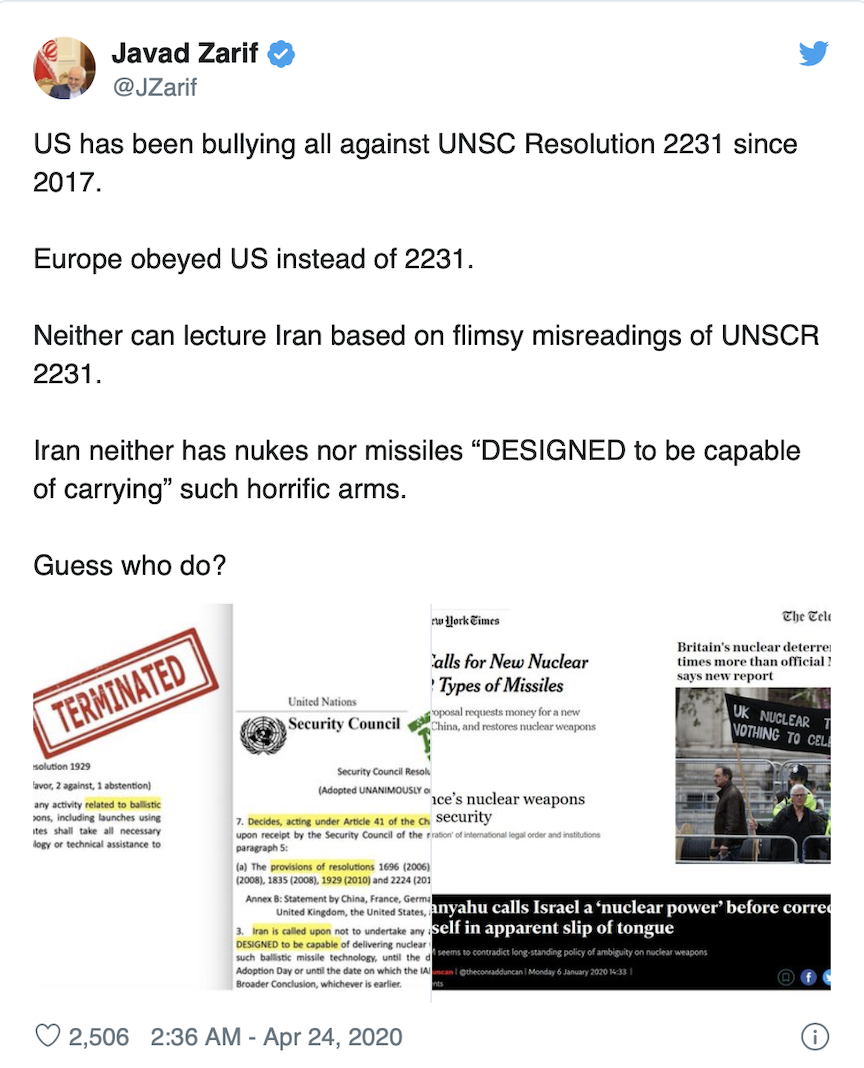The first satellite launched into space by Iran last week that revealed the country's secret military space program is nothing but “a tumbling webcam in space," the head of the U.S. military's newest service said Saturday.
Iran's Revolutionary Guard said Wednesday it put up a “Noor," or "Light," satellite into a low orbit circling the Earth after using a mobile launcher at a new launch site.
U.S. Space Force commander Gen. Jay Raymond gave his military assessment on Twitter late Saturday afternoon of the satellite.
"Iran states it has imaging capabilities—actually, it’s a tumbling webcam in space," he tweeted.
The space general said the satellite is “unlikely” giving Iran’s Islamic Revolutionary Guard Corps (IRGC) any meaningful intelligence.

The paramilitary force said it used a "Qased," or “Messenger,” satellite carrier to put the device into space, a previously unheard-of system. It described the system as using both liquid and solid fuel.
Senior U.S. officials have long warned the same technology used to put a satellite into space is also used to make long-range missiles capable of hitting the U.S. mainland.
While Iran isn’t known to have the know-how to miniaturize a nuclear weapon for a ballistic missile, any advances toward an intercontinental ballistic missile would put Europe and potentially the U.S. in range. Iran long has said it limits its ballistic missiles' range to 1,240 miles under Supreme Leader Ayatollah Ali Khamenei's orders, which puts the Mideast but not the West in its reach.
“Their secret space program advances technologies used in nuclear weapons delivery systems,” Secretary of State Mike Pompeo warned in a tweet Saturday.

A U.N. resolution tied to the landmark nuclear agreement says that Iran is “called upon” not to launch ballistic missiles which could be “DESIGNED to be capable of delivering nuclear weapons.”
Critics have said the language is watered down from a previous U.N. resolution stating Iran “shall not” conduct such tests. Iran’s foreign minister appeared to exploit this loophole on Twitter Friday.

The arms embargo on Iran expires in fewer than six months, Pompeo said last Saturday.
The launch on Wednesday coincided with the 41st anniversary of the founding of the Guard by Iran’s late leader, Ayatollah Ruhollah Khomeini.An image of the rocket that carried the satellite showed it bore a Quranic verse typically recited when going on a journey, as well as a drawing of the Earth with the word Allah in Farsi wrapped around it.
“Today, the world’s powerful armies do not have a comprehensive defense plan without being in space, and achieving this superior technology that takes us into space and expands the realm of our abilities is a strategic achievement,” said Gen. Hossein Salami, the head of the Guard.
The Guard, which operates its own military infrastructure parallel to Iran’s regular armed forces, is a hard-line force answering only to Khamenei. Over the past decade, Iran has sent several short-lived satellites into orbit and in 2013 launched a monkey into space.
In the wake of the launch, President Trump tweeted he told the U.S. Navy “to shoot down and destroy any and all Iranian gunboats if they harass our ships at sea,” both rising energy prices and renewing the risk of conflict that has simmered since an attack at the U.S. Embassy compound in Iraq that U.S. officials blamed on Iran.
In response, the U.S. carried out a strike that killed Iranian Gen. Qassem Soleimani. Iran responded days later by launching ballistic missiles at two bases in Iraq housing American troops.
Even as tensions appear to be growing, about 2,500 paratroopers from the famed 82nd Airborne Division are returning home to Fort Bragg from the Middle East over the “next several weeks,” according to Maj. Gen. James Mingus
The Immediate Response Force deployed soon after a mob attacked the U.S. Embassy in Baghdad on New Year’s Eve blamed on Iranian-backed proxy forces.
About 800 paratroopers from the 82nd Airborne’s 1st Brigade returned home in late February. The rest of the brigade will be joining them soon.

The soldiers will quarantine for 14 days upon their return to their base in North Carolina in keeping with CDC protocols.
“These Paratroopers executed the most significant rapid deployment of a combat force in more than 30 years,” Mingus said.
By Travis Fedschun, Lucas Tomlinson | Fox News
Fox News' Brooke Singman and The Associated Press contributed to this report.

